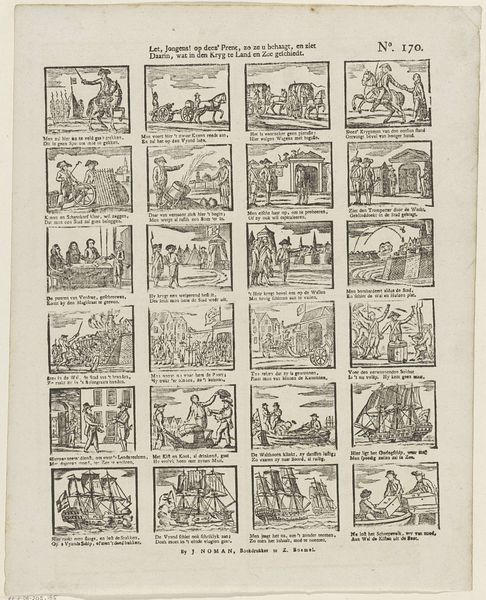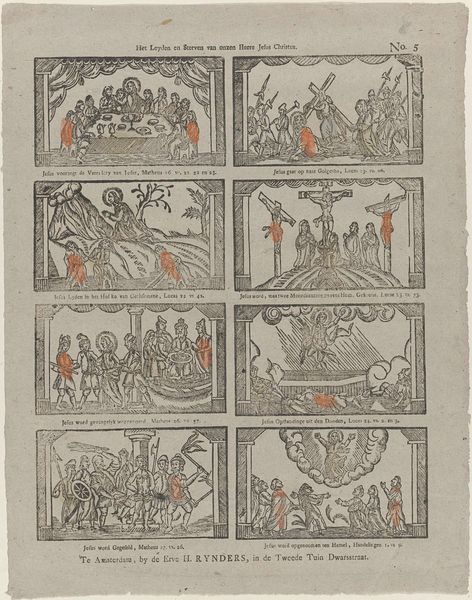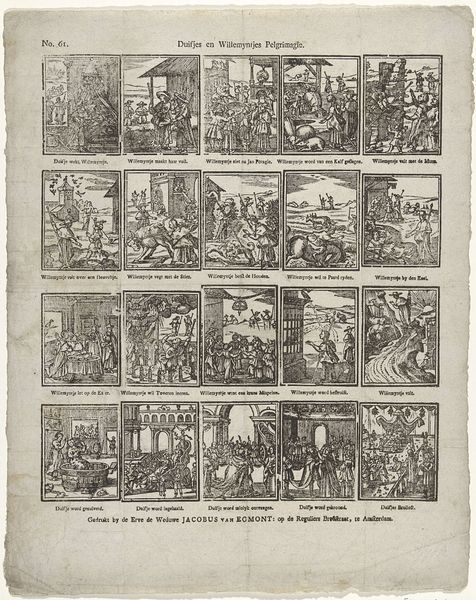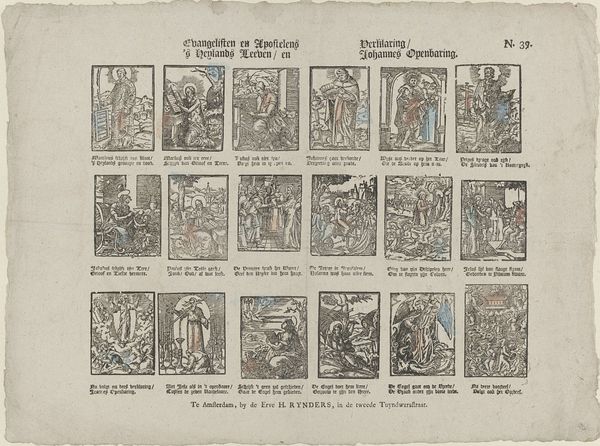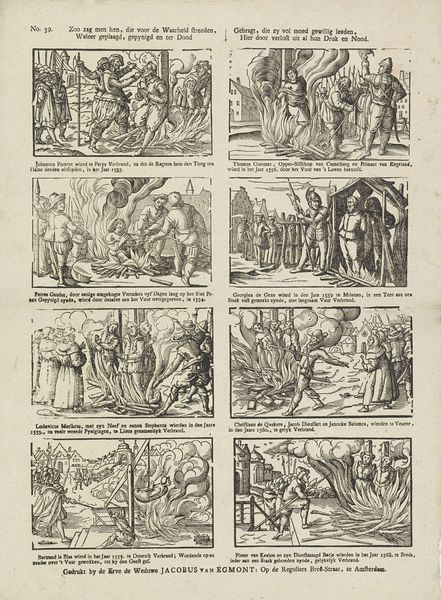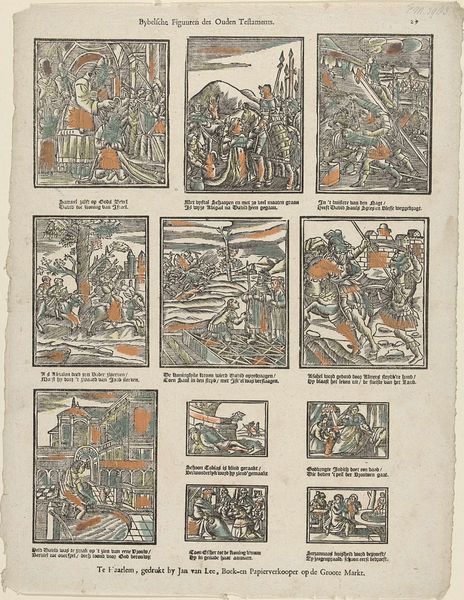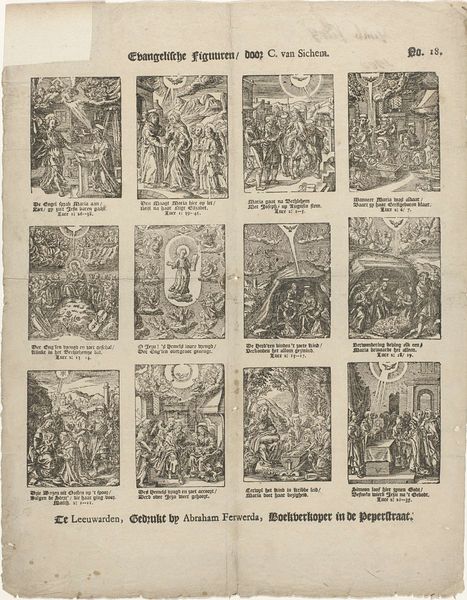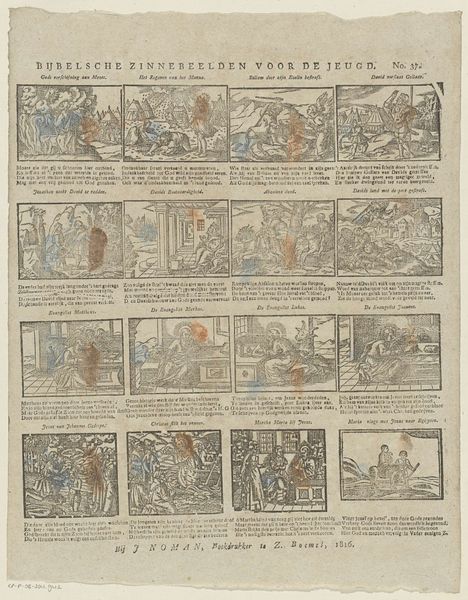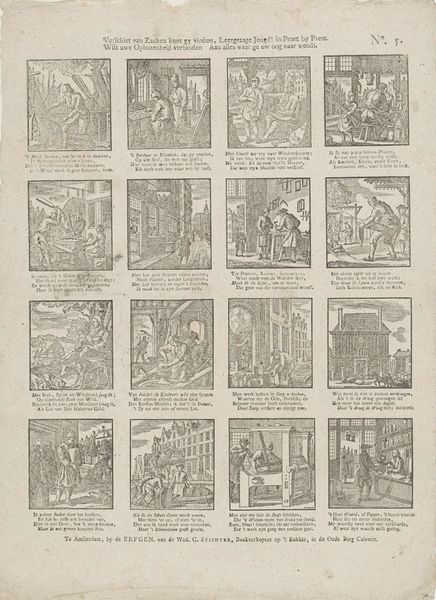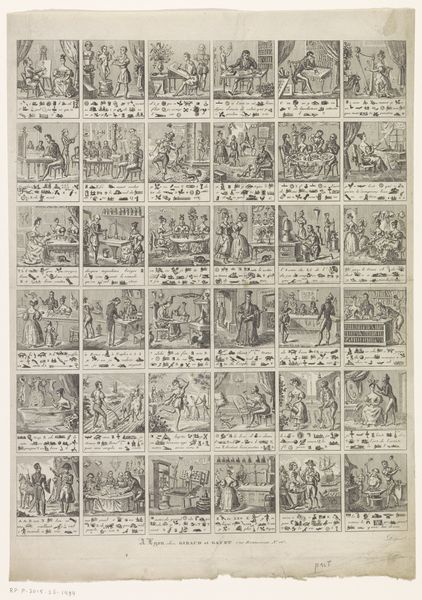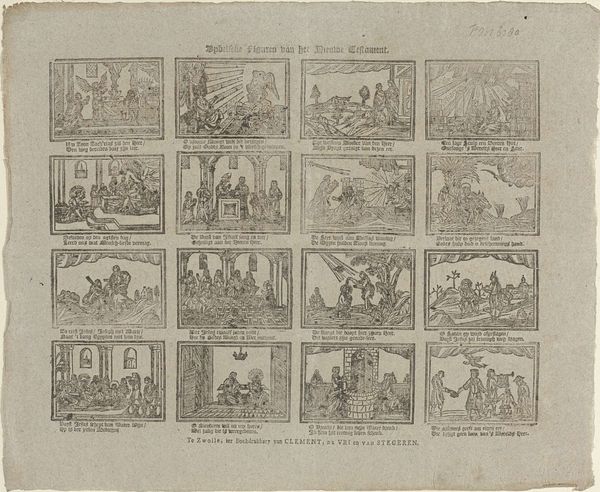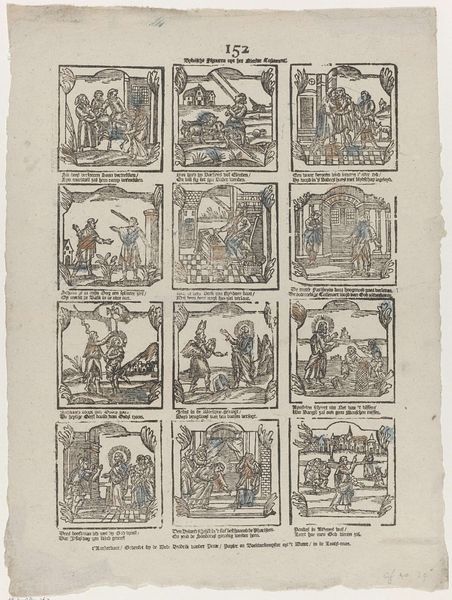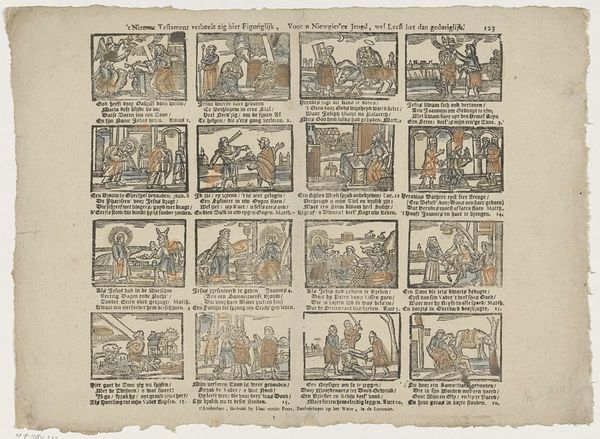
Dimensions: height 311 mm, width 375 mm
Copyright: Rijks Museum: Open Domain
Curator: This captivating print, titled "Bybelsche printverbeeldingen van 't Nieuwe Testament", presents us with a tableau of scenes from the New Testament, created sometime between 1781 and 1854 by Erve H. Rynders. It resides here at the Rijksmuseum. Editor: My first impression is that this feels more like a broadsheet or visual chapbook, quite rough, yet brimming with narrative. The simple lines of the engraving are made dynamic by the bold choices to color particular scenes. Curator: Precisely! It’s fascinating how these prints served as a visual medium for disseminating religious stories to a wider audience. Consider the socio-political landscape: religious education relying heavily on visual aids during a time of widespread illiteracy. Editor: Absolutely, and the materials themselves—the paper, the ink—speak volumes about production. We should think about the engraver. Rynders: was it a workshop perhaps, employing a team of artisans, each contributing a small section? Who were they? Where did they source these materials? This wasn’t high art. It was something widely available for popular consumption. Curator: This kind of imagery played a significant role in shaping public perceptions. The selected scenes and their portrayal reveal prevailing interpretations of scripture, serving to bolster societal norms and moral codes through art. Editor: And what about the symbolism? Notice the rudimentary, almost clumsy application of colour; splashes and blotches intended to lead the eye. Red dominates. Is it blood, divinity, sin? The intention behind these raw visual markers seems deliberately functional and immediate. Curator: And observe how the artist synthesizes elements of Baroque drama and Dutch Golden Age realism into something altogether accessible, perhaps intentionally steering away from overtly sophisticated styles to appeal to a broader viewership. The pastiche is cleverly pitched. Editor: Looking closely at this, it’s easy to see that this engraving plate would have seen some significant production and reproduction over years. So many impressions from one plate. We could think of that in terms of value for consumption. Curator: Examining such a work pushes us to question the institutions that elevated certain art forms over others, challenging the conventional art historical canon. It forces a conversation about social function. Editor: Indeed. Seeing art, and even these humble prints, as evidence of work, materials, labor, helps us appreciate the hands that shaped the spiritual landscape.
Comments
No comments
Be the first to comment and join the conversation on the ultimate creative platform.
